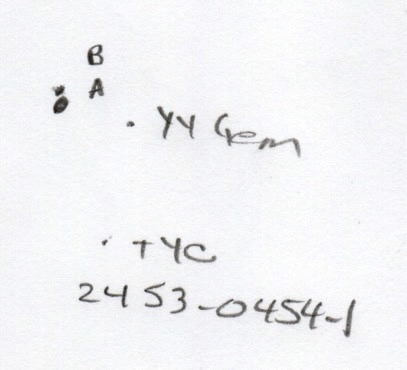Constellations: Gemini
Messier Object: M105
Star: Castor
Location: Home
Date: 2022-05-18
Time: 10:00 PM - 11:40 PM ADT
Instrument: 10" Meade SCT
Transparency: Fair (2) - Good (3)
Seeing: Fair (2) - Good (3)
Temperature: 8º C
Jerry and I were in our back yard. He had set up his camera to capture some Messier objects, whereas I had set up the 10" Meade (with his help). According to Astrospheric, the skies were average Seeing and below average transparency. Bright stars were clearly visible but I did recognize that dimmer stars would be more challenging to see.
This evening's session had 2 purposes:
1- To use my new acquired 20 mm illuminated reticule eyepiece, and
2- To practise conducting what I refer to as the 6-star alignment but was actually a 2-star alignment plus 4-star calibration. The stars used for the alignment were Spica (in Virgo) and Dubhe (in Ursa Major). The calibration stars used (not in order they were used) were Mizar (in Ursa Major), Denebola (in Leo), Arcturus (in Boötes), and Alphecca (in Corona Borealis). It wanted to use Vega and we did let it slew to its location but we would have to move our house for it see it. Too funny.
After finding each of the 6 stars using the go-to feature of the telescope, I centred the object in the finder scope then went to the eyepiece to centre it using the lit reticule. What a difference it made with the object truly centred. Changing to an eyepiece with a higher smaller resolution would mean the object would remain in the FOV which would allow for sketching of the objects and the star field (perhaps at different magnifications). With each star being centred and confirmed, the ability of the scope to find have the wanted object in the FOV improved.
|
Castor 
|
This was an "Oh, Wow!" moment. I had Castor centred in the illuminated reticule, turned off the light and noted the star appeared elongated, perhaps due to not being in focus. When focused, there it was - a double star! Oh, wow! Two stars, one above the other, one brighter than the other, one larger than the other and extremely close to one another. I could also see two other stars in the FOV that otherwise was devoid of any other stars. Using SkySafariPro, I was able to identify the two stars as YY Geminorum (also known as Castor C) and TYC2453-0454-1. |
When I went back in the house later, I did some research on Castor. SkySafariPro had named both stars as Castor α Gem with no distinction other than different magnitudes. This piqued my curiosity. Come to find out that Castor is a 6-star system, all of which are spectroscopic binaries. Castor A and Castor B have magnitudes of 1.9 and 3.0 respectively and only 6 arc seconds apart. Castor C is an eclipsing binary with an apparent magnitude of 9.8; it is 73 arcseconds distant from the bright components.
All six stars are bound to each other by gravity and share a common motion through space. The components of each of the three binary systems orbit each other and the three binary pairs also circle around each other in a total of five orbits. Castor A and Castor B have a period of 445 years and Castor AB and Castor C complete an orbit every 14,000 years. Individual components have much shorter orbital periods: 9.2128 days for Castor Aa and Castor Ab, 2.9283 days for Castor Ba and Castor Bb, and only 0.814 days for Castor Ca and Castor Cb.
M105
Time: 11:257 PM ADT
Instrument: 10" Meade SCT with 20 mm, 15 mm, 12 mm with 90º FOV
Magnification: x125, x167, x208
SQM: 19.52
Using SkySafariPro, I located M105 halfway below the imaginary line joining Regulus to Chertan. I then used the go-to to slew to that area and saw after much staring in to grey space what was a very, very faint smudge that I centred in the finder scope. I then moved to the SCT and had to make minor adjustments to get the smudge centred in my newly acquired 20 mm lit reticule. No definitive shape other than potentially an oblong out of focus. It remained as an undefined grey smudge on a grey starless star field despite several attempts to see it using the 20 mm, 15 mm and 12 mm. I gave up for the evening, especially in light of the poor quality of the transparency. So disappointing.
Perhaps next time I should try one of the many filters I have to determine if one of them makes a difference in what is seen.